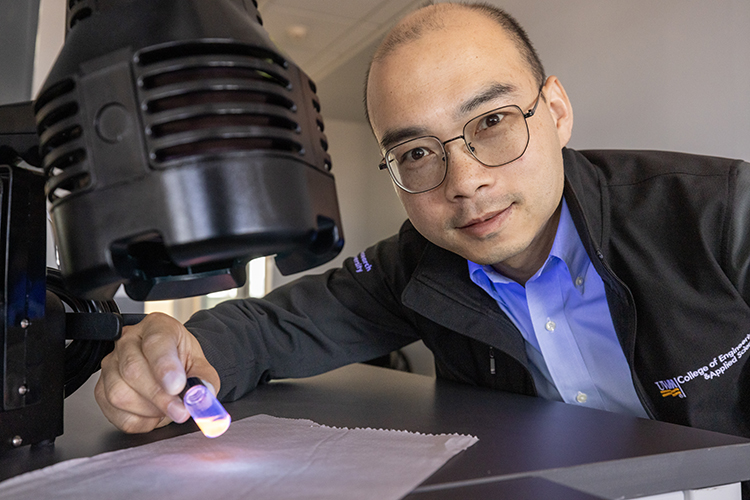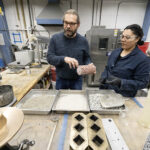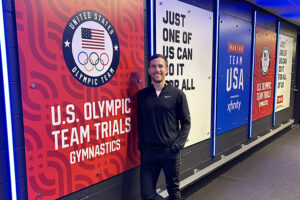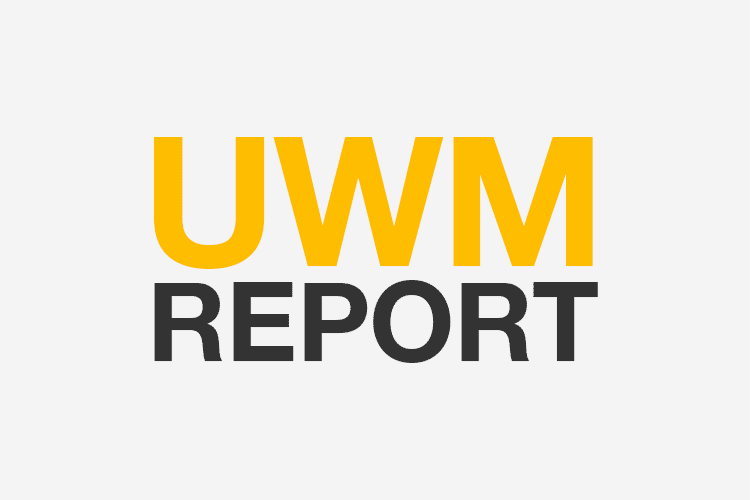A vial of nanocrystals suspended in a solution looks clear, like water. But shine ultraviolet light on these nanoscale crystals, called quantum dots, and you’ll see florescent green, orange or red, depending on the material in the crystals.
That’s just the behavior that Qingsu Cheng will take advantage of in new collaborative research funded by a $650,000 grant from the National Science Foundation.
Cheng, assistant professor in UW-Milwaukee’s College of Engineering & Applied Science, is part of a team developing low-cost biosensors that can quickly identify foodborne bacteria using the fluorescence of quantum dots for detection.
He is collaborating with the University of Illinois-Chicago and University of Nevada-Reno, which is leading the work. The team will ultimately create a platform for making portable, easy-to-use sensors that can also detect infectious diseases and even cancer at early stages.
The platform will enhance food security and minimize the cost to industry of food testing by combining cell phone images with time-resolved fluorescent sensors. Cell phone images paired with artificial intelligence can fill in the gaps in accuracy between a phone camera and a microscope. Then, the sensor itself probes the sample internally.
How quantum dots work
Quantum dots are semiconductors, meaning they have the electrical and optical properties needed to increase the sensitivity of biosensors and can be used in micro-environments. But their sensitivity degrades in real-time measurements. Researchers at University of Nevada-Reno have solved the problem with fluorescence technology that allows dots to emit weaker signals for a prolonged period.
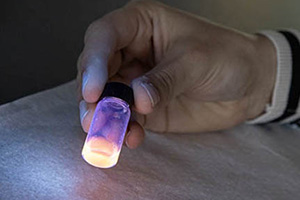
The dots range in size from 10 to 100 nanometers. (For comparison, a sheet of paper is about 100,000 nanometers thick.) These nanocrystals absorb higher frequency light and then emit that light at a lower frequency.
Cheng’s role will be to design the detection mechanism using the dots’ fluorescence “to answer yes or no questions.” He will also create the AI-assisted image analyses.
He envisions two ways of using the dots in the sensor architecture. In the first method, seeing a color would indicate detection, while no color would equal no detection.
Another mechanism involves introducing a second fluorescent dye or chemical. When the bacteria’s DNA signature is recognized, the proximity of the dye to the dots changes, setting off a transfer of energy that causes the dots to change their color. In this scenario, when the sample glows green, there is no detection. An orange glow indicates detection.
Finding more uses for quantum dots
The NSF hopes to encourage more medical uses for quantum dots, the discovery of which won its pioneers the 2023 Nobel Prize in chemistry, Cheng said.
“The goal is to develop and commercialize a field-testing solution for monitoring foodborne pathogens, like salmonella and E. coli,” he said. “We want to bring this out of the lab and into use.”
Foodborne bacteria sicken millions of Americans each year, according to the Centers for Disease Control and Prevention, yet the food industry must rely on random testing, because it isn’t cost-effective to test every portion or food item individually.
This grant is part of the NSF’s Convergence Accelerator — a program that funds researchers across institutions to find solutions to societal problems and bring them to the marketplace. Cheng plans to have intellectual property from the work that he can take through the UWM-run Midwest Regional I-Corps Program to help commercialize it.
